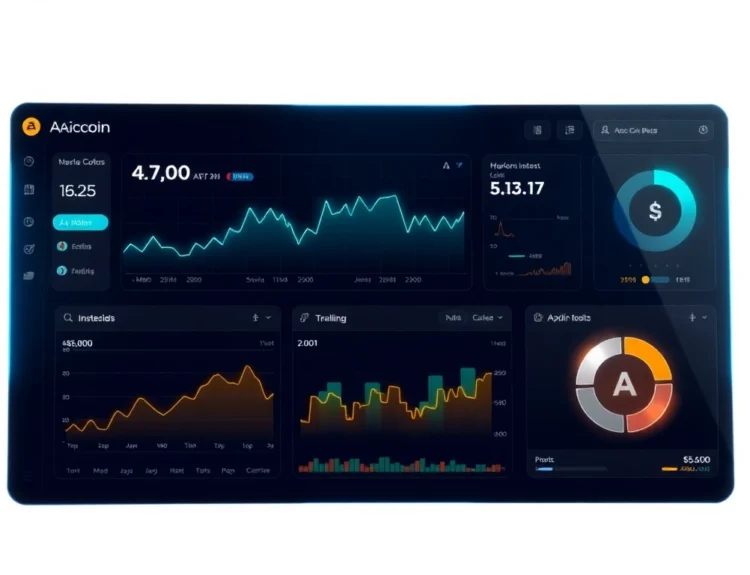Understanding the Foundations of Group Retirement Services
Defining Group Retirement Plans and Their Benefits
In the landscape of employee benefits in Canada, group retirement plans stand out as pivotal tools for fostering long-term financial security among employees. These plans are employer-sponsored programs that enable employees to contribute towards their retirement savings, often with advantageous tax implications. By offering a structured pathway for retirement savings, companies not only enhance their compensation packages but also demonstrate a commitment to employee well-being.
The benefits of implementing an effective group retirement services program extend beyond individual financial preparedness. For employers, these plans serve as strategic tools to attract top talent, improve retention, and boost employee morale. Employees, on the other hand, gain access to professional investment management, tax advantages, and the peace of mind that comes with structured savings. Understanding these core benefits helps organizations appreciate the value of tailoring group retirement options to meet diverse workforce needs.
Key Components of Effective Retirement Service Offerings
Designing a comprehensive group retirement plan involves several critical components. First, the plan structure must align with the company’s financial capabilities and employee demographics. Whether opting for a defined contribution, defined benefit, or hybrid plan, clarity on contribution levels, vesting schedules, and benefit calculations is essential.
Next, investment options should be diversified and flexible, allowing employees to choose funds that align with their risk tolerance and retirement goals. Employers should consider partnering with reputable providers like Sun Life, Canada Life, or Manulife, who offer a range of investment portfolios and robust digital platforms for easy management.
Transparency and clear communication are vital. Empowering employees with educational resources, regular updates, and access to financial advisory services enhances engagement and participation. Additionally, including features like contribution matching, profit-sharing, or auto-escalation can incentivize ongoing participation.
Legal and Tax Considerations for Canadian Employers
Canadian legislation and tax policies significantly influence the structuring and management of group retirement plans. Employer contributions are generally tax-deductible, providing a fiscal incentive to offer these benefits. Furthermore, plans must comply with the Income Tax Act and Pension Benefits Standards Act, depending on the plan’s nature.
Employment laws also mandate non-discrimination tests and reporting requirements to ensure fairness and transparency. Employers should work closely with legal and tax professionals to navigate these complexities, optimize the tax advantages, and ensure compliance to avoid penalties or plan disqualification.
Stay informed about evolving regulations, such as changes to the Pension Benefits Standards Regulations or updates in deductibility rules, as these can impact plan design and funding strategies.
Designing a Custom Group Retirement Plan for Your Business
Assessing Your Workforce’s Needs and Preferences
Effective plan design begins with a thorough assessment of your workforce. Consider factors such as age distribution, income levels, job roles, and cultural diversity. Conduct surveys or focus groups to gather insights into employee retirement priorities, risk appetite, and plan participation barriers.
For instance, younger employees may prefer aggressive investment options and feature-rich plans with educational support, while older employees might prioritize stability and predictable benefits. Tailoring offerings accordingly can significantly increase participation rates and satisfaction.
Choosing the Right Plan Structure and Investment Options
Based on the initial assessment, select a plan structure that aligns with your company’s goals. Options include deferred profit-sharing plans, group RRSPs, or hybrid models that combine features. Investment choices should be diversified across asset classes, with options for target-date funds, balanced funds, and socially responsible investing to appeal to Millennials and Gen Z employees.
Utilize digital tools to present investment options via user-friendly platforms, facilitating informed decision-making and ongoing management. These investments should be reviewed periodically to adapt to market conditions and evolving employee needs.
Integrating Flexibility and Non-Traditional Benefits
Adding flexibility features enhances plan appeal. Auto-enrollment with opt-out options, contribution auto-escalation, and the ability for employees to make mid-year adjustments are practical inclusions. Moreover, incorporate non-traditional benefits such as health savings accounts (HSAs), wellness stipends, or financial literacy programs to foster holistic employee financial health.
This integrated approach not only encourages participation but also positions your organization as a forward-thinking employer that values overall employee well-being.
Implementation and Management of Retirement Services
Partnering with Reliable Providers and Advisors
Choosing the right partner is crucial for successful plan implementation. Industry experts like Quinn Advisory Group offer tailored solutions, leveraging their extensive experience in the Canadian market. They provide ongoing advisory services, ensuring your plan remains compliant, competitive, and aligned with best practices.
Partnering with established providers who offer robust digital platforms, dedicated customer support, and flexible plan options can streamline operations and improve employee experience.
Streamlining Onboarding and Employee Communication
Efficient onboarding involves clear communication of plan details, enrollment procedures, and investment options. Use multiple channels — webinars, online portals, printed materials — to educate employees about benefits and encourage participation.
Consistent engagement through regular updates, financial wellness workshops, and personalized support enhances understanding and fosters long-term participation.
Ongoing Monitoring, Reporting, and Plan Optimization
Retirement plans require continuous oversight. Regular performance metrics, employee feedback, and compliance audits help identify improvement areas. Use digital tools for real-time reporting on contribution levels, investment returns, and participation rates.
Adjusting plans based on data insights, economic shifts, and employee needs ensures the plan remains relevant and effective, ultimately maximizing return on investment and employee satisfaction.
Maximizing Employee Engagement and Retirement Readiness
Educational Resources and Financial Wellness Programs
Providing employees with ongoing education about retirement planning, investment strategies, and financial literacy significantly boosts engagement. Integrate workshops, online courses, and one-on-one advising to demystify complex topics and foster confidence in managing retirement savings.
Incentivizing Participation and Contribution Growth
Employers can boost participation through incentives like matching contributions, annual bonuses for contribution milestones, or recognition programs. Auto-escalation features that increase contributions annually can also promote consistent savings growth without burdening employees with manual adjustments.
Measuring Success and Adjusting Strategies
Set clear KPIs such as participation rate, average contribution levels, and plan engagement scores. Use surveys and feedback tools to gauge employee satisfaction and identify areas for improvement. Regularly reviewing these metrics allows for refinements that better support retirement readiness and organizational goals.
Future Trends in Group Retirement Services in Canada
Emerging Technologies and Digital Platforms
The evolution of digital platforms offers real-time investment management, personalized financial advice, and seamless onboarding experiences. Technologies like robo-advisors and mobile apps make retirement planning accessible and engaging for a broader workforce.
Regulatory Changes and Market Developments
Stay abreast of legislative updates, such as changes in tax policies and pension regulations. These developments influence plan design and funding strategies. Proactive compliance ensures plans remain optimal and avoid penalties.
Innovative Solutions to Enhance Employee Retention
Integrating innovative solutions like wellness stipends, flexible vesting schedules, and voluntary supplementary plans can significantly boost retention. Offering adaptable benefits demonstrates an employer’s commitment to evolving employee needs in a competitive market.



